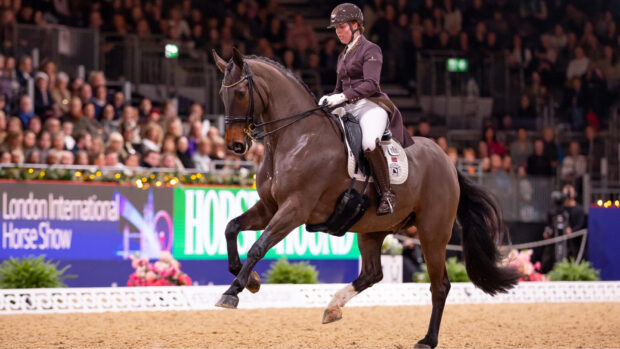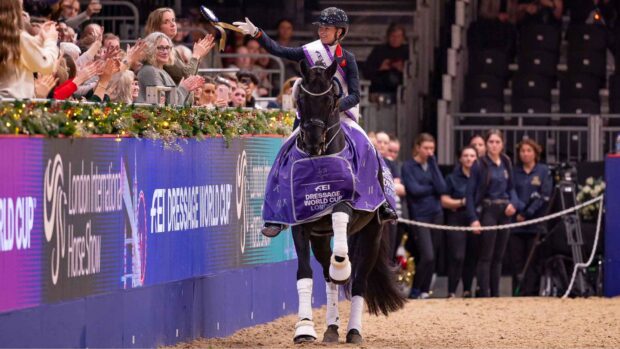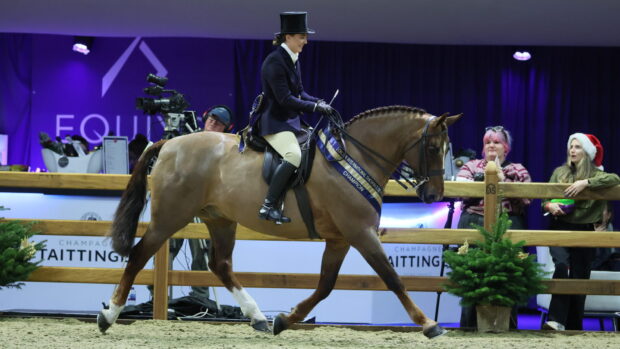Butchers, bakers, milk and market carts compete with delivery vans and London trolleys in the trade harness class at the major summer shows. But, these days, only a few are genuine working concerns.
Harrods of Knightsbridge, funeral director T Cribb & Sons and one of the few remaining rag-and-bone men or “totters” still using a horse and cart are among the exhibitors who spend more time working the streets than in showing classes. Work is the priority for all three – showing is the icing on the cake. .
“We like to get to shows,” says David West, Harrods – coachman for 10 years, “but work always takes precedence.”
As well as delivering in a five- or six-mile radius of the store and standing outside it, David and his horses do promotional work, taking part in fetes, carnivals and charity events.
David has 10 horses under his care and, like them, he divides his time between London and the stables in Oxted, Surrey. The horses are all Friesians, bought in Holland specially for the job.
“We do have three perfectly matched pairs and I would always prefer to take one of these to a show,” he says. “Having said that, all our horses are of show quality – if they aren’t good enough to be in the show ring, then they aren’t good enough to stand outside the store.” .
Harrods has four horses in London each week, then they go back to the country for a week or so. David would generally take those which have not been in town that week to a show.
A delivery van suitable for a single horse is being made for Harrods, in order to increase the amount of showing the team does. .
“These days, most trade turnouts are with single horses,” says David. “We’d like to compete more equally with them.”
At the other end of the spectrum, Bill Barber is a regular sight round the streets of his native Hayes in Middlesex, collecting scrap with his 14-year-old Welsh Cob, Selattyn Shadow, known as Tom. The duo has taken just about every prize there is for trade turnouts during the 10 years or so they have been showing.
As his father and grandfather before him, Bill has been collecting scrap with a horse and cart all his life, and also showing through the summer months. .
“We used to go to a show most weekends,” he says. “There were classes just for coster turnouts, but they tend to put all the trades together.”
Although Bill also collects scrap with a motor vehicle, he aims to take Tom and the cart out a couple of times a week, more in the summer. .
“Summer evenings andweekends are the best times,” he says. “Then people are out in the garden and hear you coming.””Funeral director Cribbs, on the other hand, finds that demand for horse-drawn funerals grows and grows.
“Last year, we did 433 such funerals – our busiest year yet,” says coachman Peter Gibson. “We subcontract to about 200 funeral directors nationwide, so we travel all over the country. We also do weddings, as well as promotional work.”
Like Harrods, work comes before showing for Cribbs, althoughthe company likes to show whenever it can. “We enter about 14 shows a year,” says Peter. “But last season we only managed to get to five.”
Cribbs uses a handsome van in the show ring ¨ the vehicle that would precede the hearse at a funeral with the floral tributes. It, too, uses Friesians, the traditional funeral horses, known in Victorian times as Belgian Blacks. .
Currently, Cribbs has nine Friesians in work, but a trip to Holland to purchase another two is planned. The horses Peter tends to use in the show ring are two old-timers, Prince and Duchess, now 17 and 18 years old.
“They really match and go together so well as a pair, but now we’re looking to bring on some youngsters,” he says.
For all three drivers, preparing their horses for a show is scarcely any different from turning them out for their daily work. It is of paramount importance that Harrods – and Cribbs – horses are immaculate when they are working and Bill’s love and pride in his horse means Tom never goes out without looking his best.
“Nothing is done differently,” says David West. “The horses are bathed before they go to London for a week, just as they would be for a show. They have to be spotless to stand outside the store – people like to pat the horses, but they don’t expect them to smell like horses!” .
Peter Gibson agrees: “Everything we do for a funeral, we do for a show. The harness is stripped down and cleaned after each use and the horses bathed at least once a week, even in winter.”
Bill Barber tends not to use his smart show London trolley and traditional coster harness every time he is out collecting round the streets. Tom, however, who lives in a stable in Bill’s crowded yard, gets no special treatment for a show above his usual grooming and bathing. .
All three men agree, however, that their horses behave differently at a show, the atmosphere making them sprightlier.
“We are also asking them to move on and show themselves off in a way that we would not while driving round London,” says David. “For daily work, the aim is to keep them calm in the traffic, not have them on their toes.” .
Collectively, these three travel thousands of miles around the streets each year, yet it is at a show, where they are seldom out of the ribbons, that they bring colour into the ring ¨ and remind spectators of the way things used to be. .


